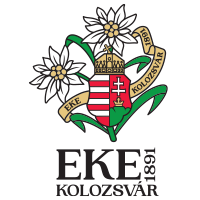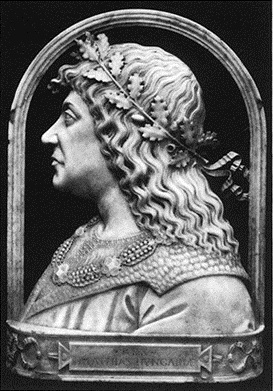
Our memorial endurance tour, named after the famous native of our treasured city, aims to revive an old initiative with the goal of once again raising awareness about the importance of hiking trails around Cluj-Napoca (Kolozsvár). Few cities are privileged enough to offer marked hiking paths to outdoor enthusiasts. And what better antidote is there to the monotony of everyday life than dusting off your boots and taking a pleasant walk in a nearby forest, easily accessible even by public transport?
Since our monthly hiking plans always include routes in the Cluj-Napoca area, we can confidently state from experience that it's not necessary to travel 50, 100, or even more kilometers to enjoy quality leisure time—nature’s treasures can be discovered right near our own doorstep. Many residents of our city have probably hiked in several countries, traveled the world, and conquered Romania’s 2000-meter peaks, yet have never set foot at the Brüll Lookout, the Cérna Spring, or on Kis-Magura. Some may not have even visited the highest point of the Feleac Ridge, Árpád Peak.
It is primarily for them, but also for those who already know and love the hiking trails around Cluj-Napoca, that we wish to relaunch the memorial endurance tour named after Matthias Corvinus. Taking place during the most beautiful season of the year—in October’s kaleidoscope of colors—the event will showcase the splendor of the autumn forest to all participants.
The 10, 20, and 30 km hiking routes offer a perfect opportunity for both families with small children and more experienced hikers to push their limits while exploring the beloved trails of our city. And for those who prefer to discover nature on two wheels, we have prepared a medium-difficulty 35 km cycling route.
Since the Hunyadi Mátyás Memorial Endurance Tour is not a brand-new project by our association, but rather a fresh take on a former idea, we would like to briefly present the history of this initiative. To do so, we turn to Tamás Tóthpál’s book Endurance Tours around Cluj-Napoca (Kolozsvár Környéki Teljesítménytúrák), which provides a detailed summary of the hike’s journey from its initial concept to its realization.
Before diving into the details, let us first present some key dates from the history of the endurance tour:
On October 2, 2004, the Cluj branch of the Transylvanian Carpathian Society (EKE) organized the first edition of the Hunyadi Mátyás Memorial Endurance Tour, offering 40 km, 20 km, and 10 km routes with a total of 48 participants.
In 2005, the date changed; instead of October, the event was held on April 23, with 21 participants. That year, the 40 km route was replaced by a 30 km route.
In 2006, the organizers returned to the original idea, scheduling the hike for October 7, which saw 67 participants completing one of the three walking routes: 30 participants on the 30 km route, 14 on the 20 km, and 23 on the 10 km.
The fourth (and final) edition of the hike took place on October 6, 2007, with only nine participants. Due to rainy weather, many who preferred the shorter routes chose not to take part. Since the organizers felt that the Hunyadi routes were not attractive enough for potential international participants, and at the time only a few locals practiced this type of hiking, the event was no longer announced in 2008, for fear that the number of organizers might exceed the number of participants.
The Hunyadi Mátyás Memorial Endurance Tours were the third such initiative organized by the Cluj branch of the Transylvanian Carpathian Society (EKE), following the Jókai and Vasvári endurance tours. The idea was conceived in 2003 by Béla Bagaméri, who was then the vice-president of the society and the president of the Pedometer Society. His name is well known within the hiking community (and beyond) as the discoverer of the Wind Cave (Szelek barlangja). (Page 106)
As for the exact reason why this endurance tour was named after one of Cluj’s most illustrious historical figures, that will be revealed in the next section. The author also offers a brief insight into the history of the event itself. Both sections are presented without modification from the original text by Tamás Tóthpál.
Why the Hunyadi Mátyás Endurance Tours? (Page 90)
What connection could King Matthias have to EKE, or even to hiking in general? As it turns out, references to our city’s famous native already appeared in the early days of the association. In the 1893 edition of Erdély, Lajos Szádeczky, then head of the EKE Cluj County chapter, commented on the well-known story involving the judge of Cluj:
“As far as I know, the late good King Matthias was the first tourist who could have been an honorary member of the Kolozs County chapter—had EMKE and EKE already existed at that time. During his travels in disguise, he wandered these same places where we now walk. Perhaps all of us from Cluj are familiar with his famous adventure involving the then honorable mayor—more precisely, judge—of our city.
After secretly leaving his army in Huedin (Bánffyhunyad), he walked to Cluj. Dressed in such a way that the guards mistook him for a man from Hóstát, they forced him into the judge’s yard to carry firewood ‘in the name of God,’ in exchange for a few blows as payment. The good judge also paid him in beatings and blue bruises instead of money. So good King Matthias carried the firewood, but as proof of the mistreatment, he carved his name into three logs.
Three days later, when he returned to the city from Gilău (Gyalu) with his army, he summoned the judge and the guards to answer for how they treated the poor. He had the three marked logs—the corpus delicti—brought forward, and in front of the Báthory House, had the judge executed...”
Thus did Matthias, the Just, hike through the city of Cluj and across the county, setting a good example for us nearly 500 years ago...
This tale clearly refers to a legendary walking tour rivaling the famous Kós 50, and likely originates from Gáspár Heltai’s chronicles. However, according to hiking traditions from the Tatra region, Matthias Corvinus also had high-altitude achievements to his name. The rock formation known as Királyorr – Königsnase (King’s Nose), located beneath the summit of Nagyszalóki Peak (2,453 m), is said to have been named after him, as he reached it during a chamois hunt—yet another feat of this great Transylvanian-born figure.
But beyond these legendary accounts, King Matthias has a more direct and tangible connection to EKE. These ties include the EKE’s Mátyás House museum and headquarters, as well as the Matthias Hikes, organized in celebration of the 500th anniversary of the king’s birth.
The Endurance Tours (pages 110–111)
The first Hunyadi Mátyás Endurance Tour was organized in October 2004. At that time, 48 participants started across three distances. On the 40 km route, 20 started; on the 20 km route, 23; and on the 10 km route, six participants started and completed the hike—in a surprisingly short time. Besides the seven-member team of the Marosvásárhely-based Örökmozgó and the recently launched Wass Albert Endurance Tour organizers, four participants came from Hungary. Béla Czékli was also present, who, I believe, tries out every new endurance hike. The following year, the endurance tour was held on April 23. This change was made because in the autumn it gets light later, so a 7 a.m. start means participants often begin traveling to the start line in the dark. The date change was actually unnecessary—it would have been enough to postpone the start time by two hours, as in the first event everyone had finished by 3 p.m. However, this time the freshly green nature was covered by a thick layer of snow that later turned to slush, except for areas above 800 meters elevation. For this event, the majority registered for the 40 (30) km route, 12 participants, of which 11 completed it and one dropped out. Six started on the 20 km route, and only three on the 10 km route. All finished. Of the 21 registered participants, three were from Budapest, two from Sfântu Gheorghe (Sepsiszentgyörgy), and the rest were from Cluj (Kolozsvár). This second event concluded at 7 p.m. with a Renaissance evening at the birthplace of King Mátyás, which we have previously described in relation to the EKE. Here, the Amaryllis Society—officially registered since its inception in 1992 by private initiative of Anikó László Bakk—entertained the audience with a varied program.
In 2006, we returned to the original plan and scheduled the hike for October 7. This time, the previously measured long distance was correctly announced as 30 km. On this route, 30 participants started; 14 on the 20 km; and 23 on the 10 km. All completed their distances.
The fourth hike took place on October 6, 2007. Due to the suspension of the tin pub’s operation that year, the start and finish were moved to the inn located at the confluence of the Gorbó and Plecska streams. This year, the 10 km distance was changed from a loop to a segmental hike based on the previous years’ experience. However, due to rainy weather, those who preferred the shorter distances did not start this time. Two completed the 30 km, and seven finished the 20 km.
The Hunyadi Mátyás Endurance Tours are a nice event in the Bükk forest, close to Cluj. Participants received a tastefully designed hiking booklet with a colorful map supplement. However, without special sights, it is hard to expect foreign participants. It lacks a significant challenge that would attract dedicated hikers—such as a longer distance or elevation gain. In reality, this hike was created for the people of Cluj. In Hungary, such an event would be considered an ordinary performance hike to the great joy of locals. However, from the perspective of performance hiking in Transylvania, it was ahead of its time. Although the number of performance hikers is growing here as well, especially in Cluj too few people still know and practice this form of hiking.
Therefore, so that the number of organizers would not eventually surpass the number of participants, the hike was not announced for 2008. Perhaps with more effective promotion it could have been kept alive, especially since 2008 was a Renaissance year linked to King Mátyás. We hope this book may help revive the Hunyadi Mátyás performance hikes in the Bükk forest. Meanwhile, in hope of better times, we publish below the guide for the hikes.
Guide to the Hunyadi Mátyás Endurance Tours (page 112)
The hiking guide is an expanded version of the itinerary written by Béla Bagaméri. To follow the route, it is helpful to be equipped with a compass, as the directions at various points are given in degrees. The longer distance of the performance hikes, listed as 40 km in the hiking booklet, was measured with a step counter that was incorrectly calibrated during the preliminary route walks. After the first event in 2004, Lavotta Székely and Zoltán Moréh checked the distance in early 2005 using a measuring tape. The distance proved to be 30 km. On the long route, the section Árpád Peak – Alder grove – Mikesi Lake, marked with a blue stripe, has practically disappeared; changes in land ownership over time have made repainting nearly impossible. The shorter hikes are partial routes of the 30 km hike, but some sections overlap in the opposite direction with corresponding sections of the Jókai hikes. Thus, from the connection point of the Hunyadi 30 and 20 km routes to the red stripe marking of the Mikes Ridge (below Akasztó), the trail follows in the opposite direction the Jókai 55 and 30 km routes up to the Hintás Tree checkpoint. From there, continuing to the Diós checkpoint, it also follows, in the opposite direction, the Jókai 10 km route. On these sections, one can refer to the respective guides. Since 2006, the Hunyadi Mátyás 10 km route coincides with the Hunyadi 20 km route up to Árpád Peak, which is also the endpoint of this hike.



